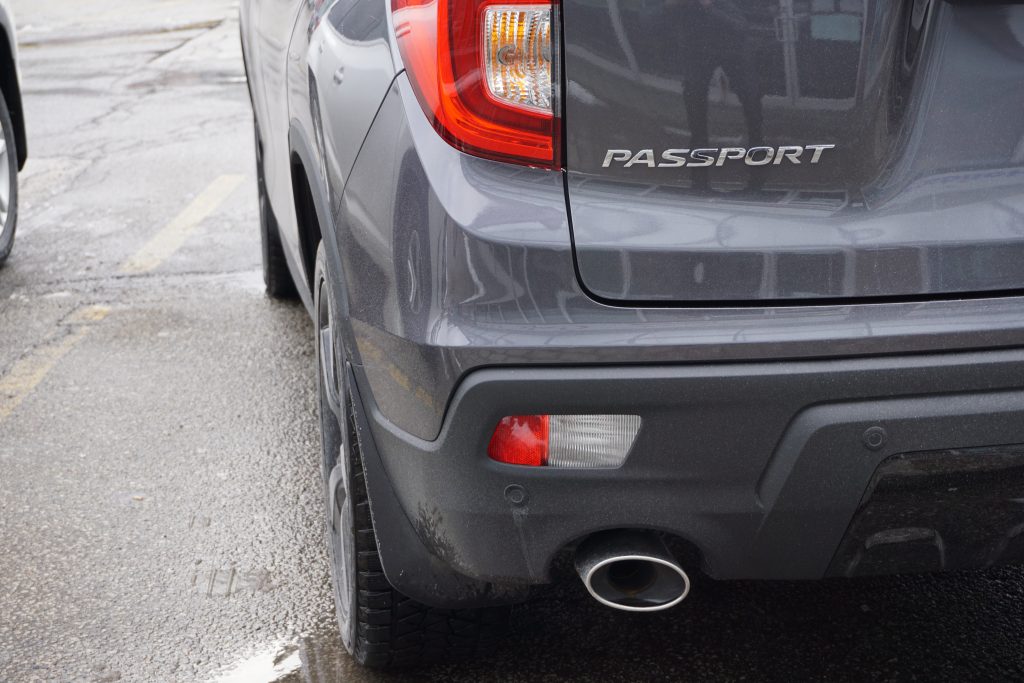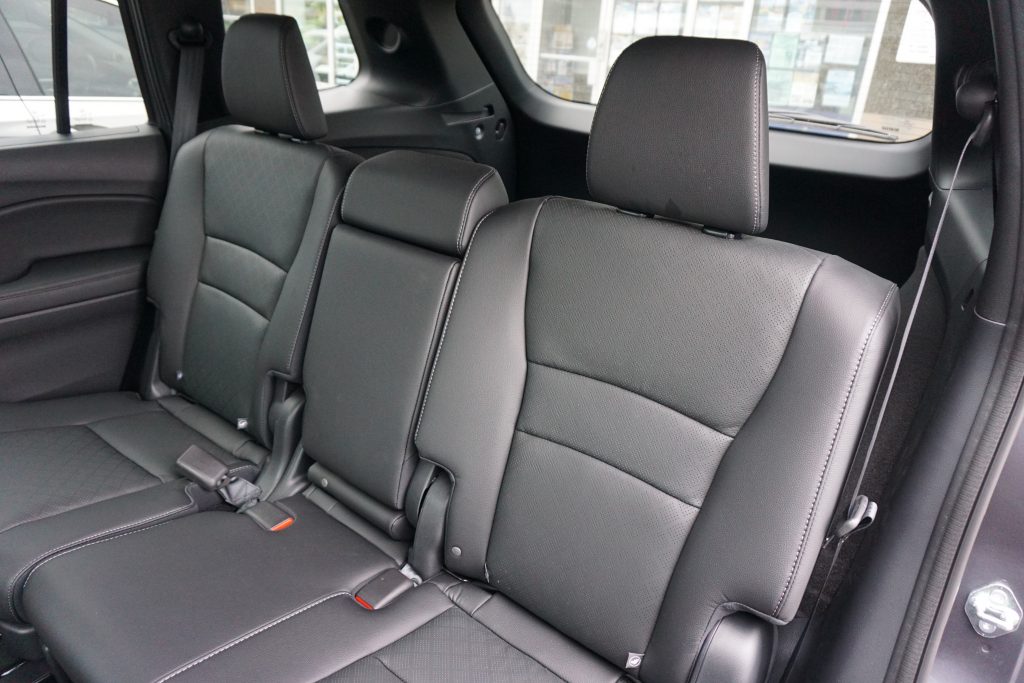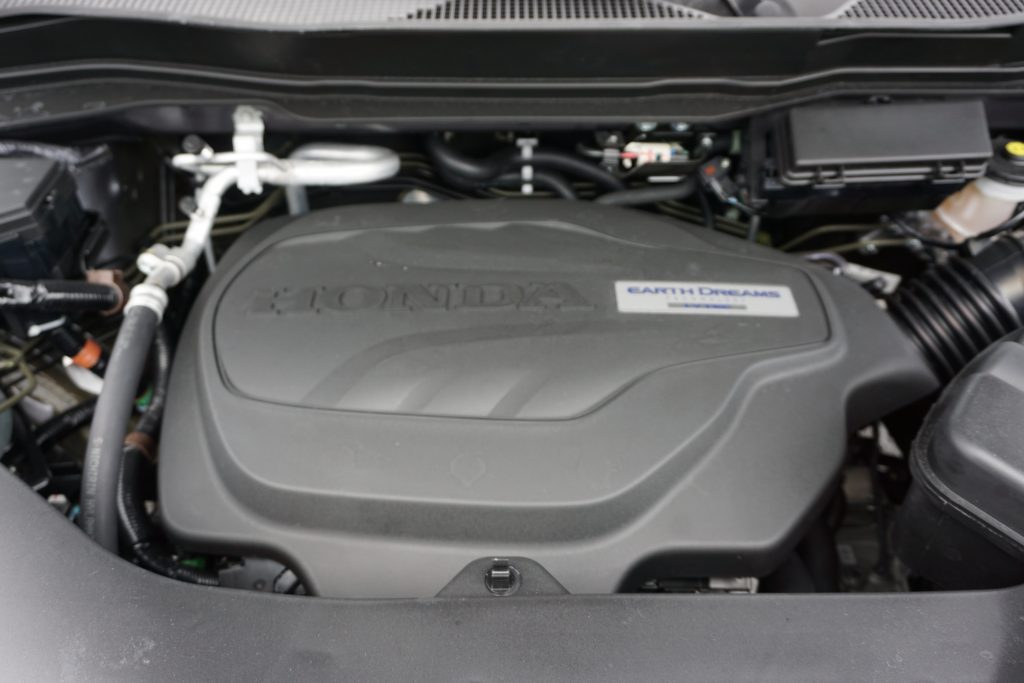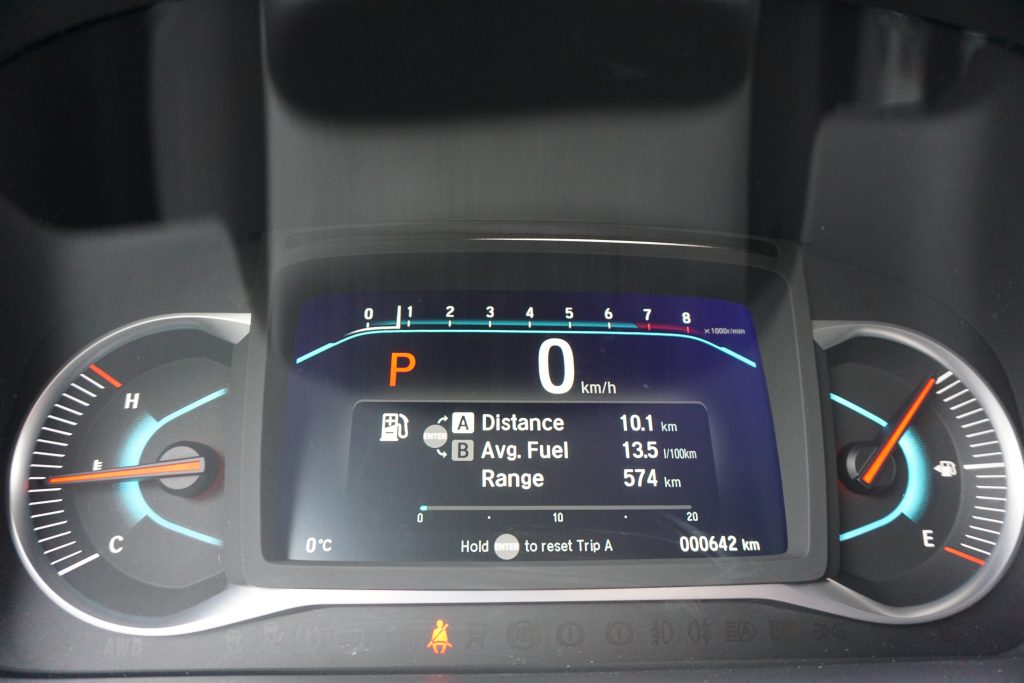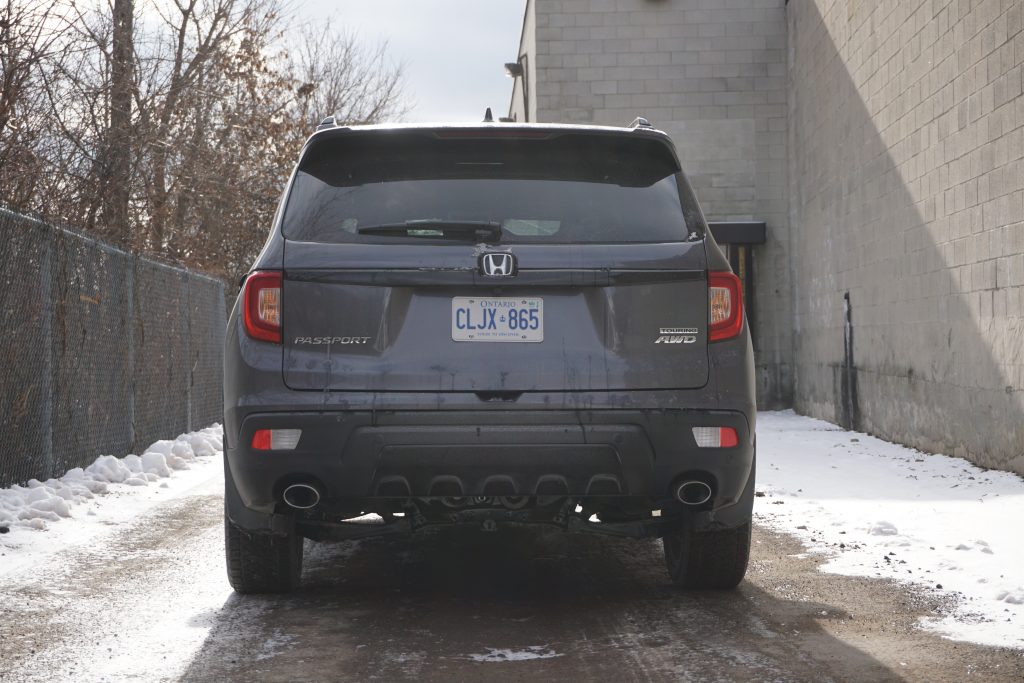Words by: Adam Allen
So, Honda has reintroduced the Passport nameplate, which sounds better than Government Sanctioned Travel Document.
It can’t be denied that ‘Passport’ rolls of the tongue much easier than its clunker counterpart. Those of you who may have plied the roads within the United States between 1993 and 2002 are likely familiar with the name (we Canucks would recognize these models as a badge-engineered Isuzu Rodeos) and it also graced the fuel tanks on variants of Honda’s stupendously popular Super Cub motorcycle. Not one to throw away the brand equity that the Passport name carries, Honda coaxed it out of retirement last year hoping to tap into that nostalgic feeling of adventures into the unknown and off the beaten path. Honda also hopes that it’ll resonate with families who align themselves with that rugged, exploratory lifestyle but who’ve outgrown the CR-V and for whom the Pilot is too big. The Passport, then, instantly becomes the ‘Goldilocks’ choice within the SUV offerings from Honda, nicely filling a gaping hole in their current lineup at the same time.
Honda’s Global Light Truck Platform shines brightest underpinning the Passport.
These bones make up the foundation not only for the Passport you see here but also the plus-sized Pilot and the Ridgeline pickup. When drove the Pilot some years back, we weren’t enamored with the suspension tuning- it felt a bit half-baked and we didn’t much care for the then-new 9-speed automatic gearbox. Then we flogged the Ridgeline pickup later on and came away impressed (it’s a vehicle that offers the best of a pickup that also drives like a car, so yeah, we liked it) but we did find some dynamic miscues that could have used some polishing. Our Passport Touring tester is the more completely realized manifestation of the three, and it fixes our biggest gripes convincingly- it shifted gears smoothly as you would expect from a Honda and the ride is one of the best you’ll experience in the segment. It isn’t as tautly buttoned down as Honda’s perennially brilliant Accord but it nearly matches the excellent sedan in terms of suppleness.
C’mon, admit it. You danced a little jig when you found out the Passport has managed to keep a turbocharged four cylinder out of the engine bay, didn’t you?
Guilty as charged, and if a burly V6 seems wrong in today’s day and age where downsized puffers are de rigueur, then we don’t want to be right. Apparently, neither does Honda because they chose to keep the engine found in many of their larger offerings on the menu for the midsized Passport. Now that the masterful VTEC screamers if yore are a speck in the rearview mirror, perhaps it’s worth reminding that Honda knows its way around internal combustion engines quite well, thank you very much. Their expertise is on full display every time you poke the throttle with enthusiasm and listen to the trademark snarl as it approaches the redline. It doesn’t make stump-pulling twist off the line- torque still peaks at a relatively high 4,700 rpm- but it provides good power and will feel strong to the audience in which it’s intended for. Another plus in the drivetrain column which we eluded to earlier: the transmission feels sorted and smooth and never once bumbled around like we remember when we drove the Pilot. We also give high marks to the brake feel which also seems an improvement over the Ridgeline we drove more recently, and the steering lacks meaningful feel but provides confidence with its on-centre behavior and precision. We wished for a snowstorm so we could better peel away the layers of the Passport’s i-VTM4 AWD but Mother Nature could only provide a few centimeters. Shod with a good set of Bridgestone Blizzaks, the Passport was utterly unfazed. It also has a substantial amount of ground clearance-206 millimeters- meaning that if you do encounter deep snow or even a gnarly access road to a pal’s cottage the Passport will not ever feel out of its element, even if serious off-roading is discouraged.
The interior is the same as the Pilot, just not as big.
An accurate assessment, that. Anyone who has ever spent time in a Pilot will feel instantly at home because the Passport uses the exact same bits as its big brother. For those who haven’t, you should know that it’s a very comfortable place to spend time on trips short and long, and that it can hold a huge amount of your stuff thanks in part to clever storage nooks throughout and a centre console that is large enough to hold a Shih Tzu. Our tester wore Touring trim, so it had every nicety that Honda offers including ventilated seats, wireless phone charging plus a heated steering wheel and remote start, perfect for the deep freeze that gripped us while the Passport was under our care. The infotainment system has vastly improved- starting with the simple edition of a sorely missed volume knob-and they only thing we complained about was that tuning the satellite radio stations was not easy and not something you should be doing while driving. A simple workaround for this? Preset your stations.
What might go wrong?
While we happily bid goodbye to Honda’s LaneWatch system (when you turn right, camera activates filling the infotainment screen with a redundant image of what’s filling the side mirror) and applaud Honda for its Honda Sensing suite of safety technologies, but they are far too overzealous. On a rural two-lane road whilst rounding a bend, the Passport thought an oncoming car was a threat and jammed on the brakes without warning. Did we mention that we longed for a traditional gear lever instead of the push button setup Honda is so sweet on these days? At least the transmission the buttons are connected to is hugely improved, but we wonder why Passport engineers bothered to specify paddle shifters on the steering wheel when they’re sorta useless. Pull for an upshift or downshift and you can sense the computers thinking “so you want to shift a gear…now? Are you sure?”, followed by the ratio swap. And while we’re harping on the drivetrain’s electronics, how about we relax the programming a little in Sport mode? While we welcome the ability to wake up throttle response and liven up the shift points of the gearbox it’s simply to frenetic to be used in many cases. We got some interesting looks by pedestrians as we drove by at the speed limit, the engine almost screaming along at unnecessary high revs.
Should I buy a Honda Passport?
The Passport plays in a crowded segment with stiff competition coming from the Ford Edge, Hyundai Santa Fe and a host of others. Even in a field of accomplished entries, we think the Passport gets the nod for best in class. It offers a hard to ignore blend of excellent road manners, astute off-road capabilities and a commodious, comfortable interior that’ll surely please those shopping around; and there’s a good ol’ V6 under the hood that sings a familiar tune that speaks to Honda’s expertise as an engine company that happens to build cars and SUVs. Honda may have dug into the history books to revive a familiar name, but the Passport has what it takes to satisfy today’s most stringent car shopper.
2020 Honda Passport Touring– Specifications
- Price as tested: $51,436
- Body Type: 5-door, 5 passenger SUV
- Powertrain Layout: Front engine/all-wheel drive
- Transmission: 9-speed automatic
- Engine: 3.5 litre V6, DOHC, 24 valves
- Horsepower: 280 @ 6,000 rpm
- Torque (lbs-ft.): 262 @ 4,700 rpm
- Curb weight: 1,914 kg (4,220 lbs)
- Observed Fuel Consumption: 13.3L/100km (18 mpg)


